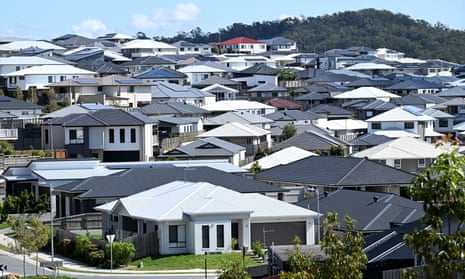Rising interest rates and high household expenses are weighing disproportionally on renters, first home buyers and those on lower incomes, and there is little relief in sight, new analysis from the Reserve Bank of Australia shows.
The RBA found that while most households and businesses were managing in the inflation-hit economy, the resilience was not uniform.
“Some households and businesses are already experiencing financial stress, and the squeeze on household budgets is likely to continue for some time,” the RBA’s financial stability report released on Thursday said.
“The households most affected have been those on lower incomes, including many renters, and relatively recent borrowers who have larger debts [relative to income] and have had less time to build up savings buffers.”
First home buyers are the most likely cohort to be in negative equity, which refers to the value of their home dropping below the purchase price, the data shows.
Known as mortgage prisoners, more than 15% of indebted homeowners can’t refinance because they no longer meet lending standards. Many of these households are also stuck on uncompetitive interest rates, increasing their financial burden.
The biannual paper offers one of the most thorough assessments of the state of the Australian economy after 10 consecutive interest rate rises dating back to May.
The Reserve Bank left its key interest rate unchanged at 3.6% this week, but indicated the rate hiking cycle may have further to run should inflation prove sticky.
Surging rental prices and high energy costs are two significant inputs keeping inflation levels elevated.
The RBA noted in its report that some parts of the market, including long-term homeowners who enjoyed years of property price increases, are well placed to navigate the rapidly changing economic conditions.
Others have been caught out.
The construction sector, for example, accounts for about 30% of company insolvencies, making it by far the most stressed industry. The financial woes are tied to the sector’s use of fixed contracts with customers that were written before the steep rise in labour and materials cost.
There are also growing concerns for the commercial real estate market, which is grappling with increased borrowing rates and a trend among people to work remotely and shop online, both of which reduce demand for building space.
In housing, prices across the country have fallen 8% from their 2022 pandemic peak, with homes in some major cities including Sydney suffering double-digit falls.
There have been steeper falls in Canada (down 16%) and New Zealand (13%) but more modest declines in the UK and the US.
after newsletter promotion
The rapid cycle of rate hikes, however, has hit Australian and New Zealand homeowners particularly hard, given their exposure to variable rates which have risen in line with increases to the official cash rate.
About 40% of borrowers have less than a three-month mortgage buffer in their prepayment facility, although the statistic doesn’t necessarily mean all of that cohort is under stress.
Fixed loans generally come with prepayment restrictions and landlords often make minimum repayments for tax purposes.
“In general, fixed-rate borrowers and investors face contractual restrictions or disincentives to make excess payments,” the RBA said.
The uneven distribution of financial stress falls particularly hard on renters, as they typically don’t have the savings buffers needed during difficult economic times.
“Lower income households, including many renters, have been most affected as they tend to have lower spare cash flows and savings available to absorb rising costs,” the RBA paper said.
In contrast, Australia’s tightly held banking sector is proving resilient, and so far has shown little ill-effect stemming from the collapse of California-based Silicon Valley Bank (SVB), and rescue of distressed European bank Credit Suisse.
But the RBA is concerned that a bank run in a digital age, which involves a rapid withdrawal of deposits, can quickly fell a bank as it did with SVB.
It said regulators would consider measures to forestall the risk of a bank run in Australia.
